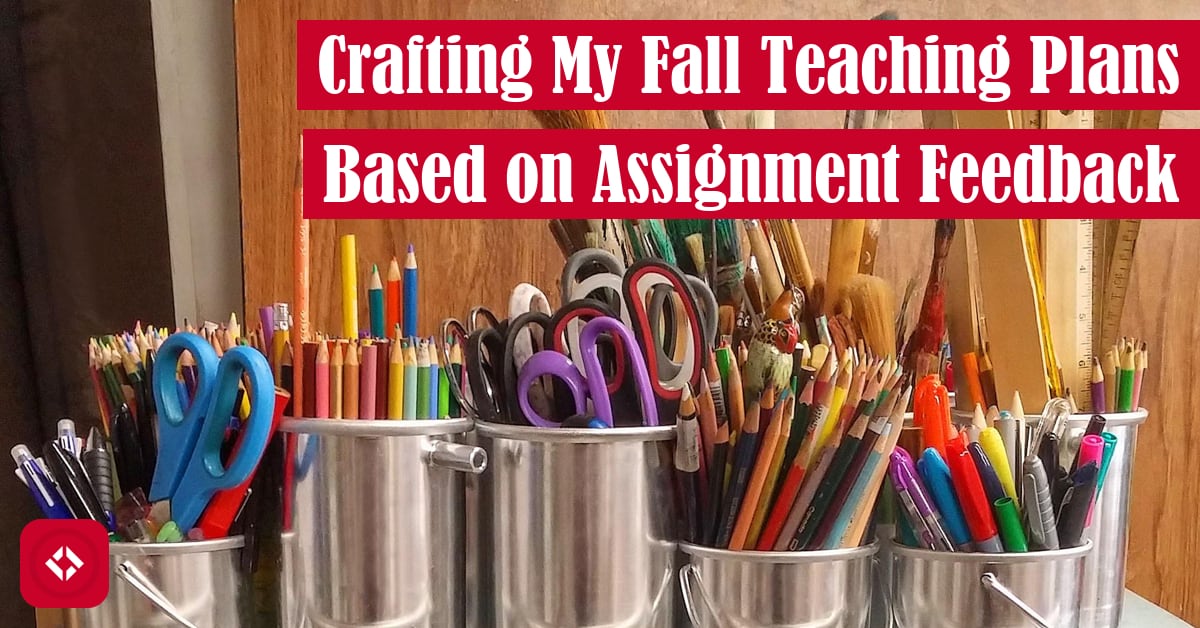As promised in my recent teaching reflection, I decided to finally go through all of the assignment feedback to help prepare for next semester. The goal of this task is to look through the assignment feedback over the last semester in hopes of finding useful suggestions that I can incorporate into my work. Let’s get into it!
Table of Contents
Data Dump
To start, I figured I’d start by dumping various comments students have made throughout the semester here. The idea is that this should give a good overview of the types of issues students were having and how I might improve them next semester. To make this a bit less painful, I’ll be breaking things out into sections based on the type of feedback. To start, we’ll look at rubric feedback.
Rubric Feedback
In the assignment surveys, I asked students to tell me how the project rubrics could be improved. All of the assignment data is aggregated, so I can’t easily tell which project a comment might belong to. That said, the sentiment is all that really matters. Let’s start!
Little more detail
More specific on what is being looked for
More details on what is expected in test cases
Having more specific things that are being looked for
Kind of vague
more clear with what we need to create, enter, output
Okay, so that’s easy! The rubrics are good, but they could use more detail. Let’s move on to checklist feedback.
Checklist Feedback
With each project, I provided a checklist, so students wouldn’t forget to turn things in. In general, students were very happy about this, but I’m sure there are some gripes. Let’s take a look.
A little more detailed instructions on how to add the titles, and examples on how it would look when done properly
more clear answer about which type of wrong cannot have
more clear about what kind of result should we get
slightly more specific
could be more specific
Again, easy enough! Students seem to be happy with both the rubrics and the checklists. They just seem to benefit even more by being more specific or clear. Let’s look at the type of resources students use to get their work done.
Resource Feedback
One of the things I struggle with as an educator is recommending outside resources. Typically, I just make my own and share them. That said, I’m certain students use other resources. Let’s see exactly which ones:
The textbook
The book
opensource.com to learn about markdown, google for definitions of terms
Textbook, previous knowledge
W3schools
The checklist, rubric and W3
The project assignment page and the rubric.
Discord Chat, the project outline
Eclipse, CSE Page, checklist
The class slides and the password checker lab.
Natural Number API
From this list, there’s nothing too wild being used. I will say that knowing that students are referring to their previous work is really exciting. I might include some of this previous work directly in the checklists, so students know where to look.
Task Planning
Coming out of the semester, I already had a list of tasks that I wanted to complete heading into the fall. Most of these tasks I track on a private GitHub repository, so I’ll list out some of those tasks here:
- Reminder to put in the Project 10 checklist that it’s okay if methods are too long
- Add Debrief in Final Slides
- Fix Bugs in View Slides
- Fix Power Method Homework 11
- Add Expression Tree Generator on Checklist
- Fix Divideby2 Solution in Homework
- Add Review Questions to Every Slideshow
- Make a How to Do Well Document
- Include Definitions in File
- Include Plagiarism in Next Slides
- Add Icebreakers to Jigsaw
- Add More Info to Slides Before Exam 1
- Add Resources to Existing Checklists
- Extend Existing Rubrics to Allow for Additional Activities
In addition to these issues, I think I’m going to make a blanket update to all the checklists and rubrics, so they’re a bit more explicit. I also want to add the emotions and list of resources to each checklist. Otherwise, it looks like we’re coasting into the fall! You know what that means? More time to crank out this dissertation proposal…
With that said, I don’t have much else to say. Let’s call this one a wrap. If you want to read more like this article, check out some of the related content:
- 5 Ways to Get Feedback on Your Teaching
- I Won the Graduate Associate Teaching Award!
- Managing People Is Hard
And if that’s not enough, you’re always welcome to support the site a bit more. I’m not stopping ya! Otherwise, take care.
Recent Posts
It's July 2024, and I have three chapters of my dissertation drafted! Two more and we'll be ready to defend.
In growing the Python concept map, I thought I'd take today to cover the concept of special methods as their called in the documentation. However, you may have heard them called magic methods or even...

